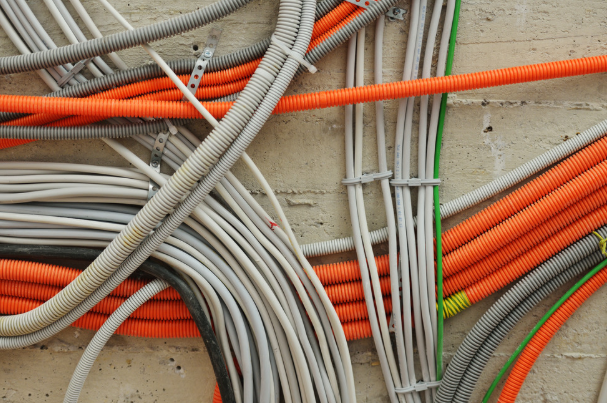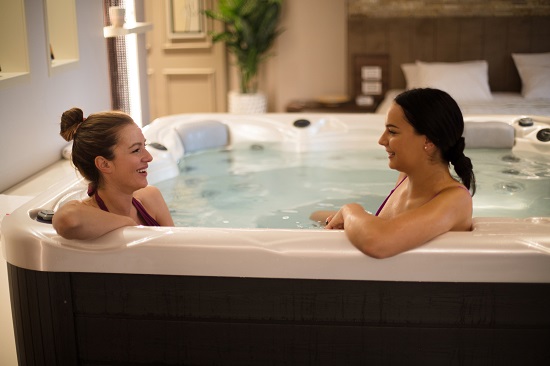If you are planning upgrades before the calendar flips, focus on projects that improve safety, comfort, and long-term value. The best investments lower utility bills, reduce maintenance headaches, and make daily life easier. With thoughtful choices, you can future-proof your home, prepare for new technologies, and enjoy immediate benefits. The five installations below deliver practical returns while positioning your home for the years ahead.
Upgrade to Grounded Outlets and Modern Electrical Protection
Older homes often rely on outdated, ungrounded receptacles that limit device safety and surge protection. Upgrading to grounded double outlets, and adding GFCI and AFCI protection where required, improves safety, expands compatibility with modern electronics, and reduces nuisance tripping. This is also the right time to evaluate panel capacity, add whole-home surge protection, and ensure dedicated circuits for heavy-draw appliances. According to Bob Vila, a licensed electrician can typically complete a full install of new grounded double outlets in about one day, which keeps disruption minimal while delivering a major safety boost.
Bring In Daylight With Energy-Smart Skylights
Few projects transform spaces as quickly as a well-placed skylight. Natural light can make kitchens brighter, hallways more inviting, and home offices easier on the eyes, all while reducing daytime lighting costs. Modern units offer low-E glazing, insulated flashing kits, and optional shades that help control heat gain and glare. According to Modernize, most homeowners choose skylights that are 24 to 48 inches wide and around four feet long, a size range that fits many roof layouts without complicated framing changes. Pair the installation with proper sealing and insulation around the shaft to protect energy performance year-round.
Install a High-Efficiency Heat Pump Water Heater
A heat pump water heater uses electricity to move heat rather than create it, which can cut water-heating costs significantly compared to standard electric tanks. These units typically work best in basements, garages, or utility rooms with adequate space and mild ambient temperatures. Look for models with high Uniform Energy Factor (UEF) ratings, quiet operation, vacation modes, and smart scheduling that aligns hot-water production with your routine. If you live in a colder climate, confirm the manufacturer’s minimum operating temperature and consider simple ducting to optimize airflow. The combination of lower operating costs, available incentives, and long service life makes this a compelling end-of-year upgrade.
Add a Level 2 EV Charger for Garage-Ready Convenience
Even if you do not own an electric vehicle yet, installing a 240-volt Level 2 charger prepares your home for the accelerating shift to EVs. A dedicated circuit, a quality wall unit, and a tidy cable management setup can turn charging into a simple plug-and-park routine. Coordinate with an electrician to verify panel capacity, run conduit cleanly, and place the charger so it reaches vehicles without stretching the cord. Many units now include Wi-Fi connectivity, usage tracking, and load-sharing features, which can be useful if you plan to add a second EV later. Planning this now avoids rushed work when a new car arrives.
Upgrade Windows and Exterior Doors for Efficiency and Comfort
Replacing drafty windows and leaky exterior doors can reduce energy loss, cut noise, and improve security in one project. Prioritize Energy Star certified products, low-E coatings, and proper installation with air- and water-management details that protect your walls. If full replacement is not in the budget, consider targeted upgrades on the sunniest or windiest orientations first, along with high-quality weatherstripping and insulated storm doors. According to the Washington State Standard, production of new single-family homes surpassed one million units per year in 2022 and 2023, a sign that building standards and buyer expectations are rising, which makes high-performance fenestration an even smarter investment for resale and comfort.
How to Prioritize and Plan
Create a shortlist based on safety, energy savings, and convenience, then request written estimates that spell out materials, warranties, and timelines. Confirm that contractors are licensed, insured, and willing to pull permits where required. For energy-related projects, ask about rebates, tax credits, and utility incentives that can improve payback. Schedule work to minimize overlap, especially for electrical and envelope projects that benefit from coordinated planning. A clear sequence, from safety upgrades to efficiency improvements, keeps your budget on track and your household running smoothly.
A year-end upgrade plan can feel less like a scramble and more like a steady move toward comfort. Choosing installations that add safety, natural light, energy savings, EV readiness, and tighter envelopes creates benefits you notice every day. When each project is properly sized and thoughtfully installed, the improvements reinforce one another, easing maintenance and extending performance. Budgets often go further when work is coordinated and available incentives are captured, yet the real value shows up in quieter rooms, steadier temperatures, and lower utility bills. By the close of 2025, the home feels more capable, and the next set of goals becomes easier to reach.









